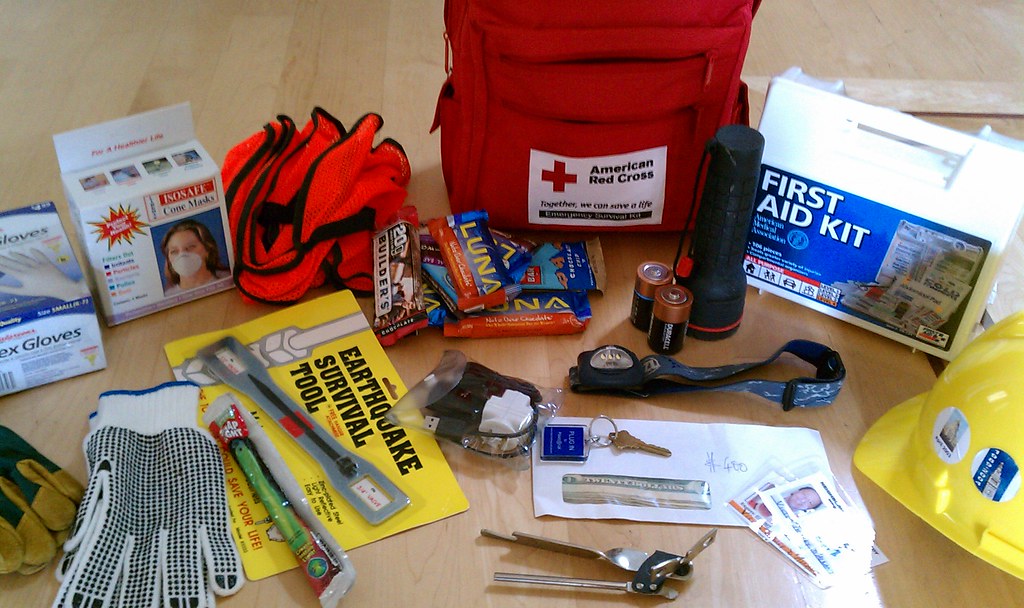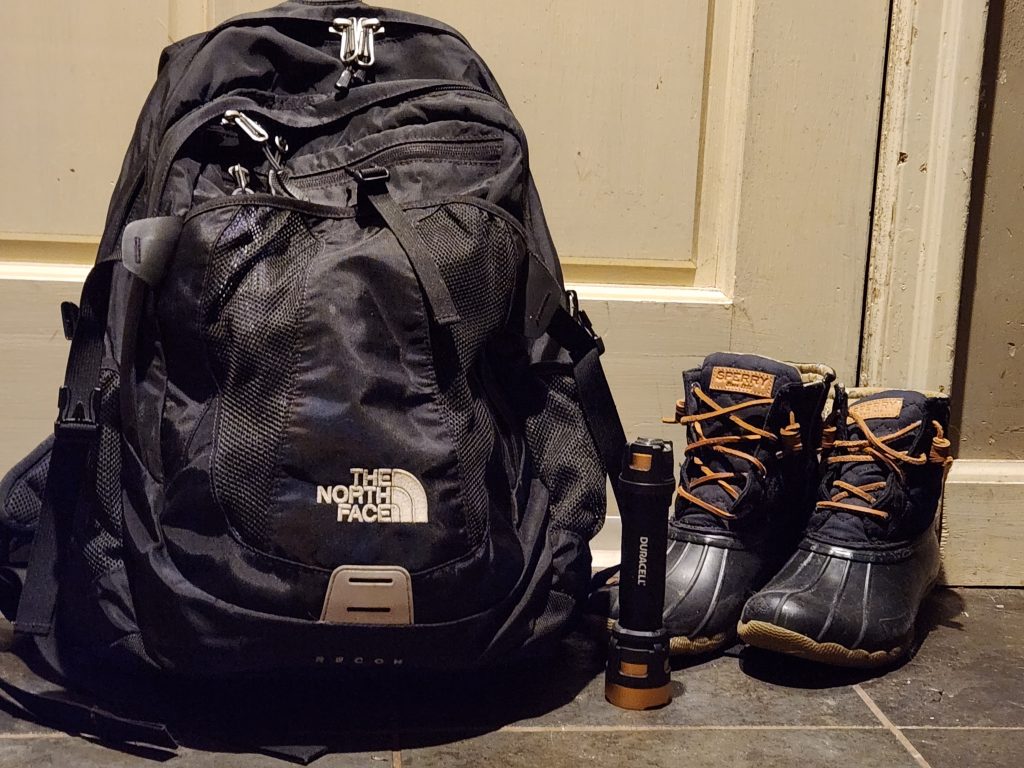Thinking about ‘The Big One:” what to put in an earthquake bag

Living in the Pacific Northwest comes with some major perks: good coffee, an excellent live music scene, gorgeous hiking trails and the presence of reproductive rights. However, there is one major drawback to the Evergreen State. In the back of most Washingtonians’ minds lurks a sense of doom about ‘The Big One,’ a term referring to the inevitable colossal earthquake that will hit the Pacific Northwest.
An article in Nature, the world’s leading scientific journal, stated that within the next 50 years, there is a 37% chance of being hit by a magnitude 8 or bigger earthquake. For a frame of reference, Turkey’s recent earthquakes were 7.8 and 7.5 magnitude, respectively.
If you feel an earthquake, remember the motto “drop, cover, hold.” Drop down to your hands and knees, cover your neck and head with your arms and hold on to something sturdy until the shaking stops. Once the shaking stops, evacuate the building. If you can’t get outside, hide underneath a solid structure like a desk or a table or take shelter in a doorway. Don’t use elevators. If someone around you uses a mobility aid like a wheelchair, assist them in evacuating.
Here in Washington, we are lucky that our buildings are built up to earthquake code, so there is a fairly low chance the building will collapse. Weirdly enough, getting through the initial earthquake is the easy part. The challenge is surviving the aftermath.

Simulations conducted by the University of Washington and the Washington Department of Natural Resources show a high chance of a post-earthquake tsunami, with waves up to ten feet in height flooding Tacoma. Landslides and ground liquefaction are also potential hazards and could render many structures uninhabitable. We should also expect the roads to be difficult to traverse, as the moving ground can fracture the asphalt. FEMA also warns that making cell phone calls may be difficult due to high call volume – when checking in on loved ones, texting is your best bet.
Considering the consequences of ‘The Big One’ is indisputably terrifying. However, the best salve for fear is reasonable preparedness. This means making an earthquake kit to keep at home or in the trunk of your car. An earthquake kit doesn’t have to be expensive or high-tech: the official FEMA booklet for earthquake preparedness recommends enough food and bottled water for three days, a flashlight and spare batteries. For me, I like to add a little extra to ensure that I’ll be comfortable while waiting for help.
Besides food, water, and a flashlight, here’s what’s in my earthquake kit:
- A change of comfortable clothes, including extra socks, hair bands and a KN95 mask
- A pocket knife
- A 10-day supply of essential daily medications
- Dry cat food (hey, I’ve got cats and I’m not leaving without them!)
- Menstrual supplies
- Bandaids, topical antibiotic ointment, sunscreen and ibuprofen
- Dial antibiotic soap
- A hand crank radio
- A USB power bank
- Plan B
- A space blanket
- A small notebook and a sharpie
It all fits in a backpack that I keep by the front door. In the event of an earthquake (or any big emergency, really) I can grab it at the same time I’m grabbing my keys and wallet.
But what happens if you aren’t rescued in three days?
The grim part is that we can’t realistically expect immediate help from the government. Even during a natural disaster, the rich come first: as we have seen in great disasters such as the aftermath of Hurricane Katrina, wealthier parts of the cities were evacuated but low-income areas were left to fend for themselves. Those that survived the levees giving way were herded into sports stadiums and left for days with no food or water. People who attempted to scavenge supplies were branded ‘looters’ and ‘thieves,’ while the government provided billions in loans for businesses to recoup their losses. This desperate situation pushed people to the brink and kindled violence and tragedies that would not have otherwise occurred. Reflecting on the lack of federal action in the aftermath of Hurricane Katrina, there is no reason to expect a different reaction from city and government officials in Washington when ‘The Big One’ hits.
The solution to this is to get to know your neighbors and build a community network. After Hurricane Katrina, it was not the federal government but the ‘Cajun Navy,’ a group of civilians in their own motorboats, who navigated the treacherous flood waters to rescue over 10,000 people stranded on apartment rooftops and freeway overpasses. Here in Washington, we need to be ready to rescue our neighbors if they need it.
Community is important, especially when it comes to a natural disaster like an earthquake. We must be all prepared to help ourselves and others when the time comes.


